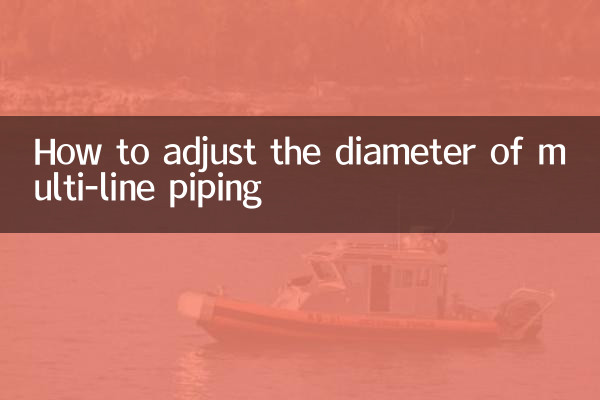How to adjust the diameter of multi-line piping
The selection of piping diameter for a multi-split air conditioning system is a key link in the installation process, which directly affects the operating efficiency and stability of the system. This article will combine the hot topics and hot content on the entire network in the past 10 days to provide you with a detailed analysis of the configuration method of multi-line piping diameter, and provide structured data for reference.
1. Basic principles for selecting multi-line piping diameters

1.Pipe diameter matches refrigeration capacity: The selection of pipe diameter needs to be determined according to the cooling capacity of the multi-line unit. If it is too large or too small, it will affect the system performance.
2.Pipe length and height difference compensation: For long pipelines or large height differences, the pipe diameter needs to be appropriately increased to reduce pressure drop and cooling loss.
3.Materials and wall thickness: Usually copper tubes are used, and the wall thickness must meet the pressure resistance requirements. Common specifications are 0.8mm-1.2mm.
2. Recommended table for multi-line piping diameters
| Refrigeration capacity (kW) | Liquid pipe diameter (mm) | Trachea diameter (mm) | Maximum allowed length (m) |
|---|---|---|---|
| ≤8 | 6.35 | 12.7 | 50 |
| 8-16 | 9.52 | 15.88 | 80 |
| 16-28 | 12.7 | 19.05 | 100 |
| ≥28 | 15.88 | 22.22 | 120 |
3. Adjustment factors for piping diameter
1.Equivalent length calculation: Pipe fittings such as elbows and tees need to be converted into equivalent lengths, and the formula is:
Equivalent length = actual length + equivalent length of pipe × quantity
2.Height difference compensation: Every 10 meters of height difference requires an increase in pipe diameter (for example, from 12.7mm to 15.88mm).
3.Ambient temperature effect: In high-temperature environments (>40℃), it is recommended to increase the diameter of the trachea by 10%-15%.
4. Frequently Asked Questions and Solutions
| Problem phenomenon | Possible reasons | solution |
|---|---|---|
| Poor cooling effect | Pipe diameter is too small or too long | Check and adjust pipe diameter and shorten pipe length |
| The system is noisy | Air velocity too high | Increase the diameter of the trachea or add a silencer |
| Compressor starts and stops frequently | Poor oil return | Optimize the air pipe slope (≥2%) or add an oil return bend |
5. Construction precautions
1.Duct cleaning: Need to be purged with nitrogen before installation to prevent impurities from entering the system.
2.welding protection: Nitrogen-filled welding prevents oxidation. Nitrogen pressure is recommended to be 0.02-0.05MPa.
3.Insulation treatment: The air pipe and liquid pipe need to be independently insulated, and the thickness of the insulation layer is ≥15mm.
6. Latest industry trends (hot spots in the past 10 days)
1.Promotion of environmentally friendly refrigerants: The proportion of R32 refrigerant models has increased, and the pipe diameter selection needs to be 5%-8% larger than that of the R22 model.
2.Intelligent piping design software: Brands such as Daikin and Gree have launched AI piping tools that can automatically calculate optimal pipe diameter solutions.
3.Copper-aluminum composite pipe application: New materials can reduce pipe diameter requirements by 15%, but attention should be paid to anti-corrosion treatment of interfaces.
From the above analysis, it can be seen that the selection of multi-line piping diameter requires comprehensive consideration of multiple parameters such as cooling capacity, pipeline layout, and environmental factors. It is recommended to refer to the manufacturer's technical manual in actual projects and optimize the design in conjunction with the latest industry standards.

check the details

check the details